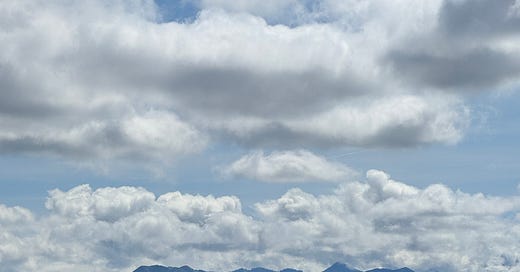It's Time to Stop Saying Our Chardonnay is "Not California."
Let's claim the diverse and wonderful golden wines made in the Golden State
I mentioned in the last Through the Grapevine that I spent much of last week in Santa Barbara County, which is known for Pinot Noir and Chardonnay. Chardonnay has been abundant there since the 80s, and it is made in a variety of styles. Perhaps some of them are oak-soaked butter bombs, but I didn’t encounter a single one that fit that description. Instead, I found the same disclaimer at every tasting room: “Don’t worry, this isn’t your normal California Chardonnay.”
But what is a “normal” California Chardonnay?
In the past you would have found my name on the list of people who associated Chardonnay with full-bodied, buttery wines full of vanilla and smoke. P.S., I didn’t like them. You can still find plenty of Chardonnays in that style among the mass-produced bottles in the grocery store, often conveniently labeled as “Buttery,” or bearing advertising slogans like “Too buttery? Says no one.” Well, says me. But these days I struggle to name more than a handful of premium Chardonnays made in the so-called-typical California style.
That style became extremely popular in the 1980s and looms large even decades (gulp) later. But Chardonnay is capable of so much more: it is sometimes called the winemakers’ grape because it is so malleable and, perhaps more than any other grape, clearly shows the array of choices available in the vineyard and winery. Warm climates and cool climates bring out different fruit characteristics, which can be reinforced by harvest timing. Stainless steel emphasizes the bright fruit flavors and high acidity, but oak barrels can add texture. So can batonnage, or stirring the wine on the lees (yeast cells after fermentation). New oak will bring toasty, vanilla, spice, or smoky notes, and even if you think you don’t like them, I dare you to try them in a carefully aged take on Chardonnay. Malolactic fermentation can bring a creamy, buttery feel and taste…but you might also inhibit the production of diacetyl, softening the acidity without reminding people of movie theater popcorn. Or you could just use it for some of the world’s best sparkling wines!
What’s more, it’s not as if these other styles are new to California. The story of Chardonnay in the Golden State has never just been about Rombauer and Kendall Jackson, although obviously they have their place. Wente started growing Chardonnay in the Livermore Valley in 1908, and their clone is estimated to be the origin of 80% of California Chardonnay - and they have always made a variety of styles, with their iconic Riva Ranch being a balanced and only gently oaked expression. The Judgment of Paris in 1976 wasn’t won by butter bombs; Chateau Montelena was making Chardonnay much as we still do now, with lively, acidity-driven fruit, minimal oak influence, and no malolactic fermentation at all. I’ve been traveling to California to taste wine for almost two decades, and for all of those years I’ve been greeted with glasses of Chardonnay and far more pleas to give them a chance - “They’re not like California Chardonnays!” - than I’ve ever found oaky, buttery wines. After a long and contentious journey from resistance to curiosity to begrudged acceptance, I’ve finally been won over by lean, laser-focused versions, and more surprisingly, by richer expressions (although not so far by “your normal California Chardonnay.”)
The important thing I want to note is that these other styles are not good because they’re not California. Some of them might be made in French styles (note the plural, as there is not a singular French style either!), but that’s not why they’re good. They are California, and you can taste California in the best of them. The fresh, ripe fruit flavors that are so abundant here, not just in the wine. The bracing acidity aided by fog and wind. Depending on where you get it, the saline of ocean breezes. And everywhere, the sunshine. I wish I had a more pragmatic way to describe it, but in every region of this state, the best Chardonnays taste like they are infused with the remarkable light we have here. They are as uniquely of this place as any of the Cabernets or Pinot Noirs that grow in the same areas.
So I wonder, how long are we going to keep calling a single style of such a variable grape “normal?” Why are we letting the buttery, oaky styles that so many of us admittedly do not like define the style of an entire state? Instead, let’s claim the diversity that is the true heritage of this grape in this place. I don’t want to hear that it’s not a California Chardonnay anymore. Let’s start telling people why these great wines are exactly what California Chardonnay is.
Now that I’ve vented, I’ll share some of the best Chardonnays I found on my trip:
Presqu’ile - Santa Maria Valley if you love a super crisp, saline take, or Presqu’ile Vineyard if you want to try a delicate touch of oak and a bit more texture.
Liquid Farm - They also make a spectrum of Chardonnays, from the lean, neutral oak White Hill to the rich Golden Slopes. All delicious.
Brewer-Clifton - Again, a range, all great. Diatom is all stainless steel and as precise and linear a Chardonnay as I’ve found in the U.S. His other Chards tend toward a bit more creamy texture and light oak, but are beautifully balanced.






Hear hear! I totally agree 👍
Presqu’ile is yummy!